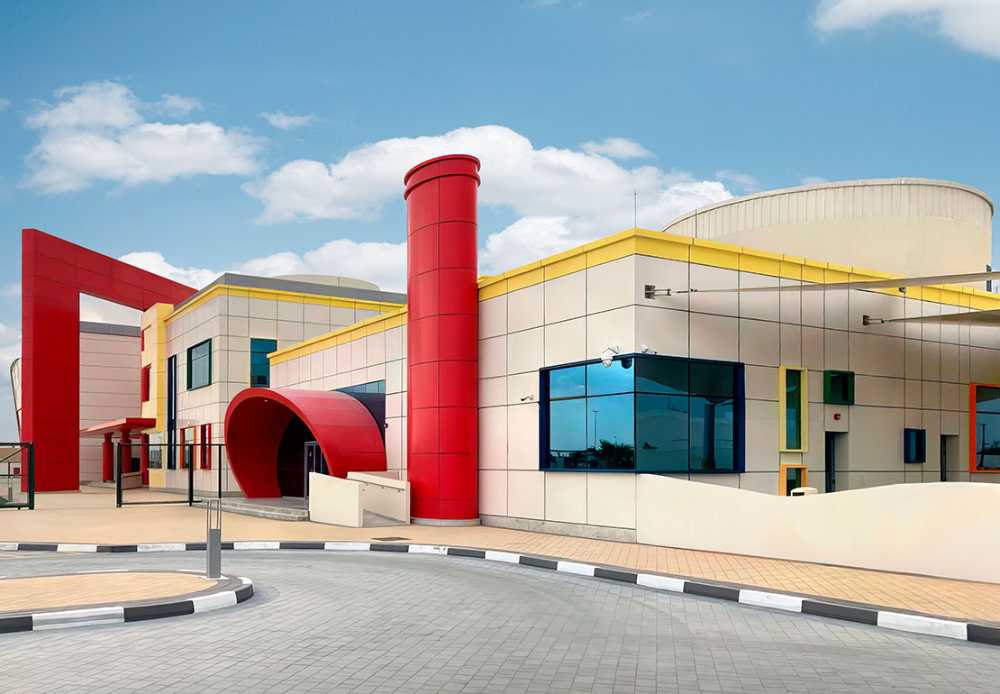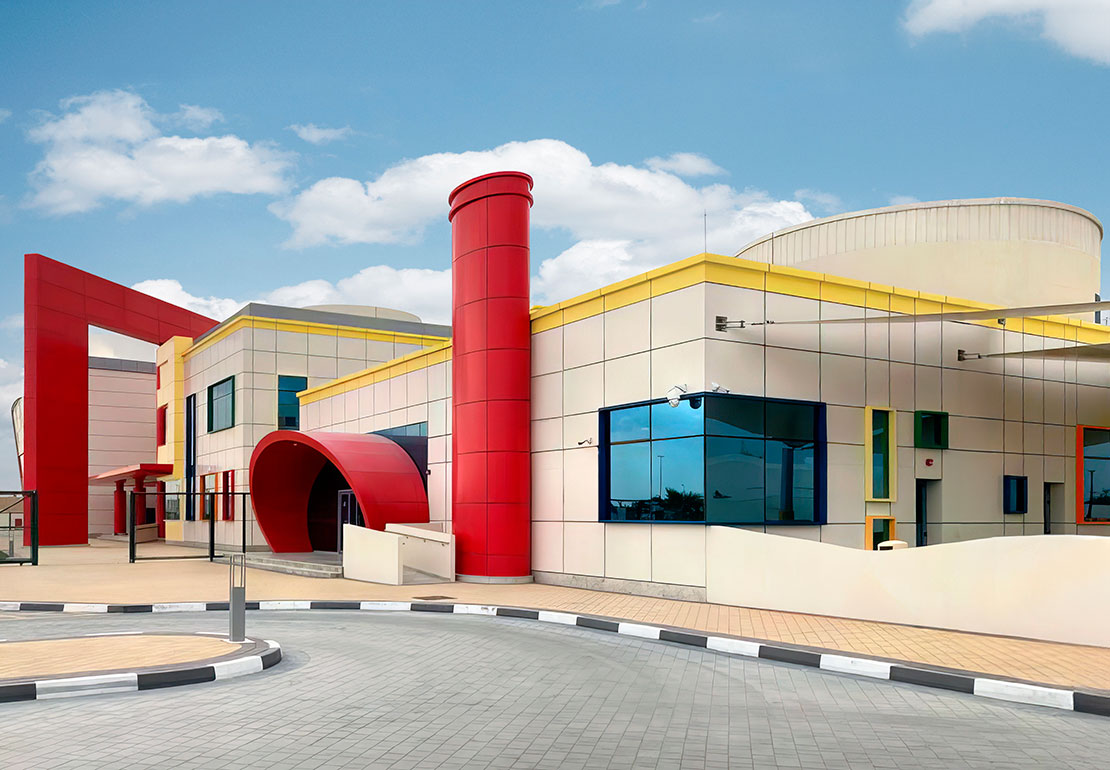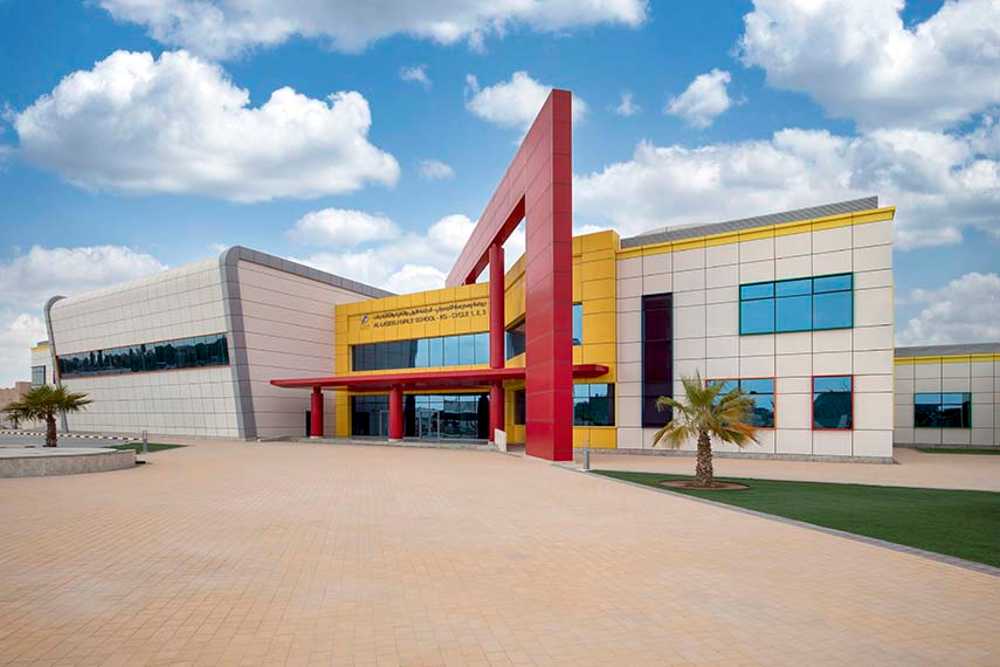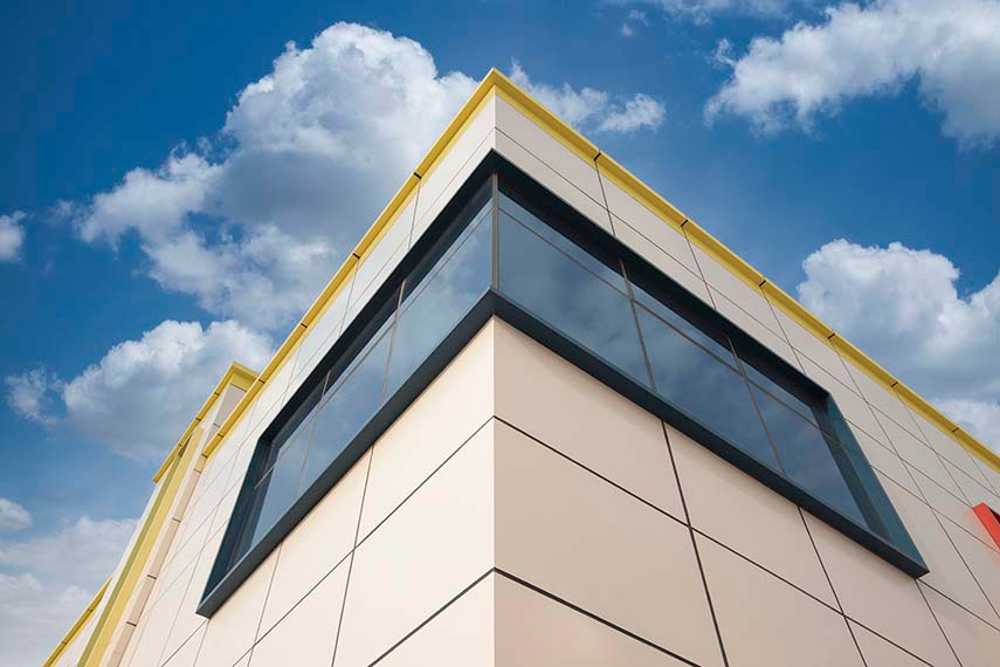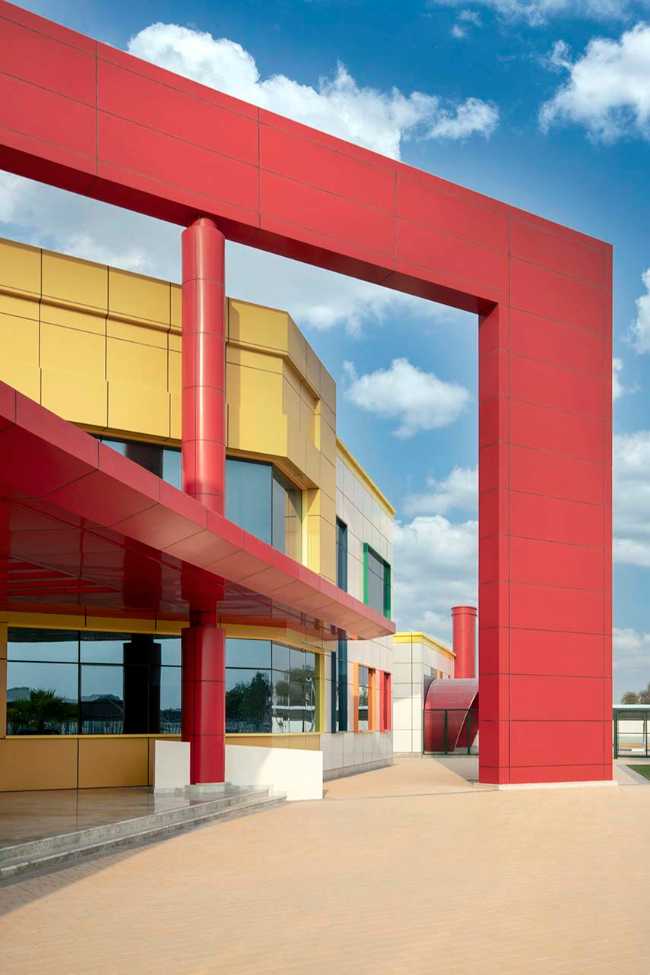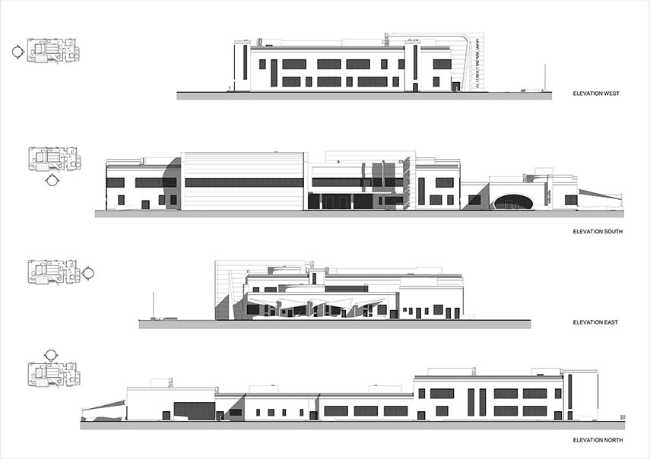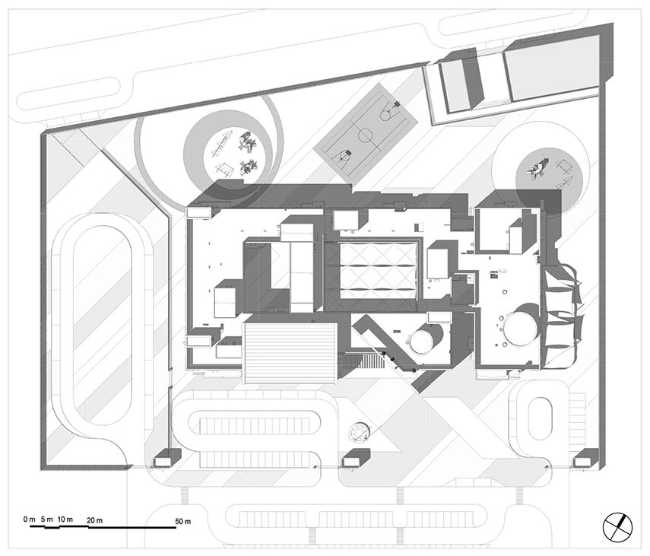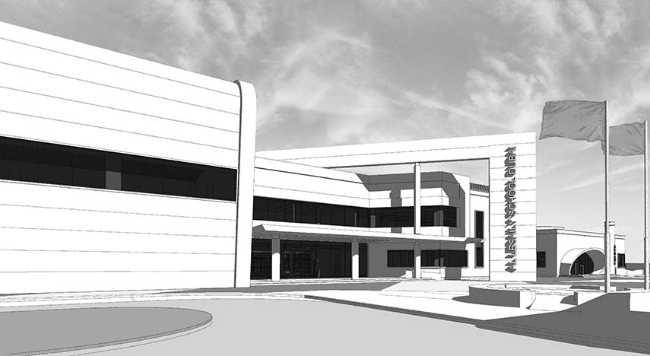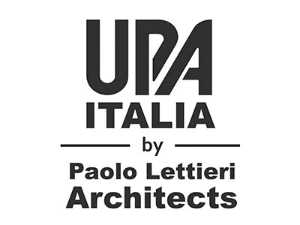BIM Modularity and Childlike Inspiration
A school complex designed to welcome girls in the small town of Al-Laseeli, south of Dubai. The project, signed by the UPA Group, stands out for being the first public building designed in BIM in the United Arab Emirates. The rigidity of the 1.5-meter module translates into a playful architectural system, made of white volumes, colored geometries, and courtyards as central spaces of school life. The 1.5-meter module, a constraint imposed by the Ministry of Infrastructure and Development, becomes the basis of a playful architectural language. The white aluminum facades transform the entire building into a kind of large squared notebook. The colored window frames, detached from the facade plane, break the compositional rigidity, suggesting a play of shapes designed to stimulate the perception and curiosity of the little ones.

